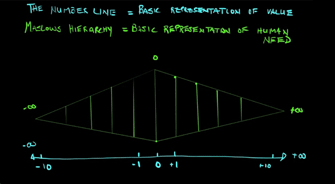Physical Address
304 North Cardinal St.
Dorchester Center, MA 02124
Physical Address
304 North Cardinal St.
Dorchester Center, MA 02124
 By understanding the correlation between the types of value (needs) and the types relationships created from these value exchanges, it is possible to give each and every relationship in your life more purpose and more direction. This will greatly enhance the positive characteristics of all the relationships as well as the potential value exchanged throughout these relationships. It is clear that when their is more depth created in a relationship there is also more potential value that can be exchanged.
By understanding the correlation between the types of value (needs) and the types relationships created from these value exchanges, it is possible to give each and every relationship in your life more purpose and more direction. This will greatly enhance the positive characteristics of all the relationships as well as the potential value exchanged throughout these relationships. It is clear that when their is more depth created in a relationship there is also more potential value that can be exchanged.
There is a big difference between someone you casually go for a drink with (shallow connection) vs. a connection where someone may support you in your self-esteem and confidence (deep connection).
In the prior lessons we talked about how what people need they will value.
We have also gone more into depth about Maslow’s Hierarchy of Needs and how it is a simple outlined theory for understanding human needs. The next step is about understanding how this hierarchy of needs will impact the relationships you develop and than the application of how we can create more meaningful relationships in our lives!
Here’s the video for Lesson 6. Check it out and let me know what you think in the comment section below.
First we have to understand basic value in math. The simplest way to understand value in math is the number line. The numbers that you put in the number line are based off the applications, more specifically the problems you’re trying to solve. This is due to the relative nature of value. The number line encompasses both positive and negative infinite, as well as 0.
Secondly you have to understand how Maslow’s Hierarchy of Needs fits within this structure – it is also a simple representation of value, in this case human need.
In any relationship you can give or add value to that relationship (a positive value exchange), or you can take or subtract value from that relationship (a negative value exchange).
This is only possible if you are aware of the other parties perception of value.
You can also choose to avoid specific relationships altogether and choose to not exchange any value (a 0 value exchange).
The types of value that you’re exchanging from Maslow’s Hierarchy will determine the types of relationships you build.
For example: (Comparing the exchange of value to the relationship created)
Now if you look more specifically at the hierarchy itself and needs at each level you can also see patterns deeper into the spectrum of value that is the number line.
The closer you get to the bottom of the triangle of Maslow’s hierarchy, the less quantifiable value there actually is. Similarly so, the closer you get to 0 the lower the value also becomes.
Lower-level values (external value) are:
The higher on the triangle of Maslow’s Hierarchy you go the higher the value becomes. Similarly so, the further along the number line you go the greater the value increases all the way to infinite.
Higher-level values (internal value) are:
You will notice that there are patterns in the values within Maslow’s hierarchy of needs that are perfectly paralleled to the types of relationships that are created from those value exchanges.
Relationships based off of external exchanges will be more short-term, shallow, low value, and will be volatile.
Relationships based off of a more internal exchange of value will be more long-term, deep, high value, and stable
We will go more into depth with these patterns in value to provide greater awareness of the purpose and direction that every relationship has the potential of reaching in the next videos.
P.S. If you want to accelerate your success in implementing these strategies and reaching your goals, we’d love to help you. Apply today to our Mentorship Coaching program and we’ll gladly offer you a free coaching session to see if we’re a good fit.
Next lessons:
| Lesson 7: Coming soon… |
| Lesson 8: Coming soon… |